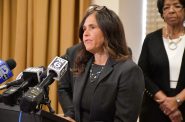Milwaukee Charter School Enrollment Declines
After years of growth down 3% this year. Why? New report may shed some light.
“I’m pleased to announce that we exceeded our projected enrollment for the 22-23 school year,” said Milwaukee school superintendent Keith Posley back in September to the school board. Milwaukee Public Schools (MPS) reached about 100% of it projected enrollment, somewhat higher than the numbers reported by the state.
What Posley didn’t say was the projected enrollment was based upon a decreased enrollment. Regular enrollment, which has been declining for years for MPS, dropped by 2%, from 60,804 to 59,311, in the current school year. More surprising, MPS charter enrollment dropped by 3%, from 7,786 to 7,544. In contrast, statewide charter enrollment increased by 4.5%.
The state’s total charter enrollment is over 18,000 students, but when charters from Milwaukee’s three authorizers are taken out, the rest of the state has only a couple of thousand charter students compared to a state public school enrollment of over 807,000.
Posley was surprised with the downturn in MPS charter numbers. But there is no joy in that decrease. MPS charter students are counted as part of the total enrollment of the district upon which state funds are distributed.
Posley suggested multiple causes for the charter downturn. In an interview with Urban Milwaukee, he pointed to a change in leadership at Milwaukee Excellence, which fired its founder and CEO a year ago. The Achilles’ heel for independent schools is that a dynamic leader can quickly put together a successful school. But once that leader leaves, a school can also quickly fall apart.
MCP spokesperson, Brittany Sanderson, says that their schools have been able to maintain a stable enrollment because they attract students in kindergarten and keep them through their entire elementary years. Few openings are available after kindergarten.
Another MPS charter grouping is Carmen schools. It has maintained an excellent reputation over the years, but is struggling of late in two of its three MPS schools. Carmen Northwest Campus lost 11% of its student population this year. But its last state report card shows that it still “Meets Expectations.”
The best head-to-head comparison of a regular MPS school and a Carmen charter is at the Pulaski High School building, where both have programs. The regular MPS school boasts of an International Baccalaureate program and increased its enrollment by 21 more students than last year to a total of 886. In the same building, Carmen Southeast has lost 7% of its students and is now down to an enrollment of 724. Both schools have similar state report cards listed as “Fails to Meet Expectations.” The Carmen program ranks a few points higher.
The first charter school was established in Minneapolis in 1991. Over time, some for-profit, charter school chains swooped into major cities across the country. However, Wisconsin passed its first charter bill in 1993, and Milwaukee soon had a number of home-grown charters, ahead of most major cities, leaving less room for the chains to get established.
National chain charter providers were somewhat perplexed by the MPS authorization process. Because charters in MPS began with grassroots providers, prospective charters were asked on their application forms what community support they had. One outside provider stated that they had never been asked that question before. “That is not how we charter schools,” an official with American Quality Schools told the Milwaukee school board back in 2012, when I served as a board member.
Community support may be key to the long-term survival of charters. Parents choose the schools for various reasons, often having less to do with academic achievement numbers. It may be based upon recommendations from family and friends, whether students wear uniforms, if the church pastor suggested it, or because the school’s location in convenient. “Academy” and “College-Bound” in the name has swayed some parents.
As Wisconsin Public Radio has reported, “Enrollment in public school districts dropped 0.85 percent from September 2021 to September 2022. During that same time period, independent charter school enrollment increased 4.5 percent while enrollment in private school parental choice programs increased by 6.7 percent.”
The issue of charter schools will be discussed this Thursday, January 12, before a committee of the school board, which will discuss a study from the Wisconsin Center for Educational Research at UW-Madison by Dr. Bradley Carl and Daniel Marlin. They will present findings on their analysis of charter schools in Milwaukee and compares those findings with other charters around Wisconsin and the nation. While their study does not include what has happened this year in Milwaukee, it may help explain the status and impact of charter schools in this city.
K-12 Education
-
MPS Training in Science of Reading Going Poorly
 Nov 23rd, 2025 by Terry Falk
Nov 23rd, 2025 by Terry Falk
-
The Fear Factor at MPS
 Nov 11th, 2025 by Terry Falk
Nov 11th, 2025 by Terry Falk
-
MPS Reaching Out to Community
 Nov 2nd, 2025 by Terry Falk
Nov 2nd, 2025 by Terry Falk























I think it’s important to note that the number of kids in Milwaukee is shrinking. The 2020 census counted about 16,000 fewer kids than in 2010. But it’s not just the census numbers. According to birth certificate records, Milwaukee moms had 98,000 babies in the 2010s compared to 112,000 in the 2000s and 117,000 in the 1990s.
The schools in Milwaukee are competing for a shrinking pool of children.
Charter schools are suppose to be innovative because they are given more freedom in curricular areas and governance areas. If this is such a creative idea, why aren’t all public schools given the same opportunity?